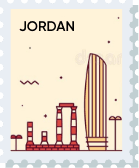Comparing MEAN vs MERN Stack: Choosing the Ideal Web Development Framework

Quick Summary: Web development has made significant advancements over time. The emergence of modern technologies has expanded the possibilities for developers to provide innovative solutions. Among these choices, two web development stacks, MEAN and MERN, stand out. In this article, we will explore the key considerations for custom MEAN stack development and MERN stack development services so you can choose the ideal web development stack for your project.
Know the MEAN Stack:
The MEAN stack is a comprehensive set of JavaScript software that enables building reactive web applications. It is comprised of MongoDB, a database system using NoSQL to store information; Express.js, a web framework for Node.js; AngularJS, a front-end framework for single-page apps in JavaScript; and Node.js, a JavaScript runtime for executing server-side code. Together, the MEAN stack provides end-to-end JavaScript capabilities for constructing dynamic web apps with a NoSQL database, server-side programming, and adaptive single-page front-ends. Since the MEAN stack utilizes JavaScript across all layers, it offers a smooth development process and is a popular choice for developers wanting an integrated ecosystem.
Benefits of MEAN Stack:
-Entirely JavaScript-based, allowing for a unified development language and simplified development
-Robust and flexible due to the use of NoSQL databases
-High scalability and quick turnarounds
-Decoupled frontend and backend allowing for greater flexibility and reusability
-Numerous tools and libraries facilitate the development
Exploring the MERN Stack:
On the other hand, the MERN stack development is similar to MEAN but replaces AngularJS with React.js, a popular JavaScript library for building user interfaces. MongoDB, Express.js, and Node.js remain consistent components of the stack, providing backend support. React.js, known for its component-based architecture and virtual DOM, offers greater flexibility and efficiency in building interactive user interfaces. The MERN stack is well-suited for projects that prioritize frontend flexibility and performance.
Benefits of MERN Stack:
-Entirely JavaScript-based, allowing for a unified development language and simplified development
-Reactive and efficient frontend due to the use of React
-Decoupled frontend and backend allowing for greater flexibility and reusability
-Numerous tools and libraries facilitate the development
Comparing the Two Stacks:
Both the MEAN and MERN stacks have their unique strengths and use cases. The MEAN stack excels in offering a comprehensive solution for full-stack development, with AngularJS providing robust frontend capabilities out of the box. On the other hand, the MERN stack offers greater flexibility and versatility in frontend development, thanks to the power of React.js. Developers often choose between the two stacks based on project requirements, team expertise, and scalability needs.
Considerations for Choosing the Right Stack:
When deciding between the MEAN (MongoDB, Express.js, Angular, Node.js) and MERN (MongoDB, Express.js, React, Node.js) stacks for your web development project, there are several key considerations to keep in mind. Here are some factors to help you choose the right stack:
Frontend Framework:
MEAN stack uses Angular as its frontend framework, while MERN stack uses React. Consider the strengths and features of each framework based on your project requirements and the expertise of your development team.
Scalability and Performance:
Evaluate the scalability and performance needs of your project. MEAN stack is known for building large and feature-rich applications, whereas MERN stack is favored for high-performing single-page applications. Choose the stack that aligns best with your scalability and performance goals.
Developer Expertise:
Assess the expertise and familiarity of your development team with the technologies used in each stack. Consider their proficiency in Angular or React, as well as their experience with Node.js and MongoDB.
Ecosystem and Libraries:
Look into the ecosystem and available libraries for both MEAN and MERN stacks. Consider the community support, documentation, and third-party libraries that can aid in the development process and ongoing maintenance of your project.
Flexibility and Reusability:
Evaluate the flexibility and reusability of components within each stack. Both MEAN and MERN stacks offer modularity and decoupled architecture, allowing for easier integration and maintenance of components. Choose the stack that best enables code reusability and flexibility in your project.
Type of Application:
Consider the type of application you are building. MEAN stack is suitable for complex, scalable applications, while MERN stack is well-suited for dynamic single-page applications. Choose the stack that aligns best with the specific requirements and objectives of your project.
Project Timeline and Budget:
Take into account the project timeline and budget constraints. Assess how each stack can impact development speed, cost, and ease of maintenance in the long run. Choose the stack that fits within your project timeline and budget constraints.
Conclusion:
Both the MEAN and MERN stacks offer robust solutions for web development, each with its strengths and advantages. By carefully evaluating your project needs and considering the strengths of each stack, you can make an informed decision that aligns with your goals and objectives. Whether you choose MEAN or MERN, you’ll be well-equipped to build scalable, performant, and feature-rich web applications. The choice between MEAN and MERN stacks for your project ultimately comes down to you. These two JavaScript web development stacks each have their strengths. MERN leverages the simplicity and efficiency of React.js for rendering user interfaces. MEAN utilizes AngularJS’s robust model-view-controller architecture for building large, complex applications. At Brain Inventory, we know choosing the right stack is critical for your project’s success. Our goal is to help you unlock the full potential of your business idea. Let’s examine your project’s specific needs, and collaborate to build an impressive technological solution that achieves your vision. The optimal technology stack for your web app depends on your requirements. By working together, we can create something incredible.

Have an idea?
Get in touch, we’d be
happy to hear from you
We are always looking out for new collaborations, whether you are a client who is passionate about a project or a talent who is interested in joining our team, our doors are always open.
locate us

India (HQ)
618, Shekhar Central, Palasia Square, A.B Road, Indore, Madhya Pradesh, 452001
+918109561401

United Kingdom
Brain Inventory, SBVS, 8 Roundhay Road, Leeds, UK, LS7 1AB
+18008209286

Canada
44 Main Street East Milton, ONCanada L9T 1N3
+4166696505

Jordan
185 Wasfi Al-Tal Street, Ammon Oasis Complex P.O Box 4724 Amman 11953 Jordan
+960770781000

USA
720 Seneca St Ste 107 Seattle, USA 98101
+1(206)6533419
if it's digital,we'll make it.
- Numetric - Online Accounting Software similar to QuickBooks
- Bloomia - Kegel exercise
- Virifi - Blockchain Powered Document Certification & Signing Platform
- Revolution Travel CRM - Custom CRM Built for Travel Agents
- Fatoura - Online Invoicing Platform
- My Fit Mantra - Your health partner
- Ocureel - Relation Building and video sharing Application